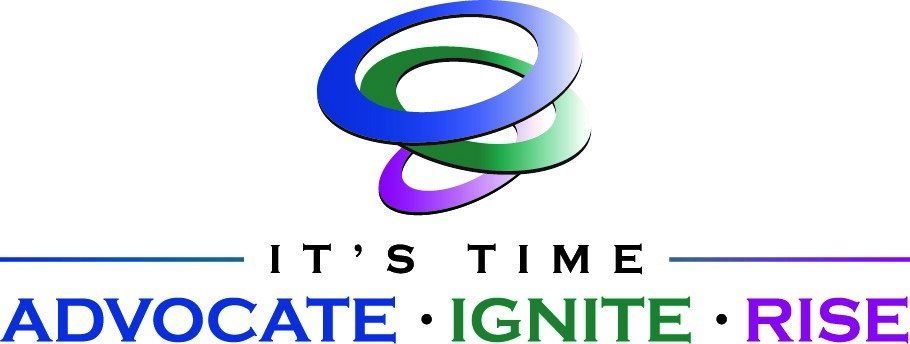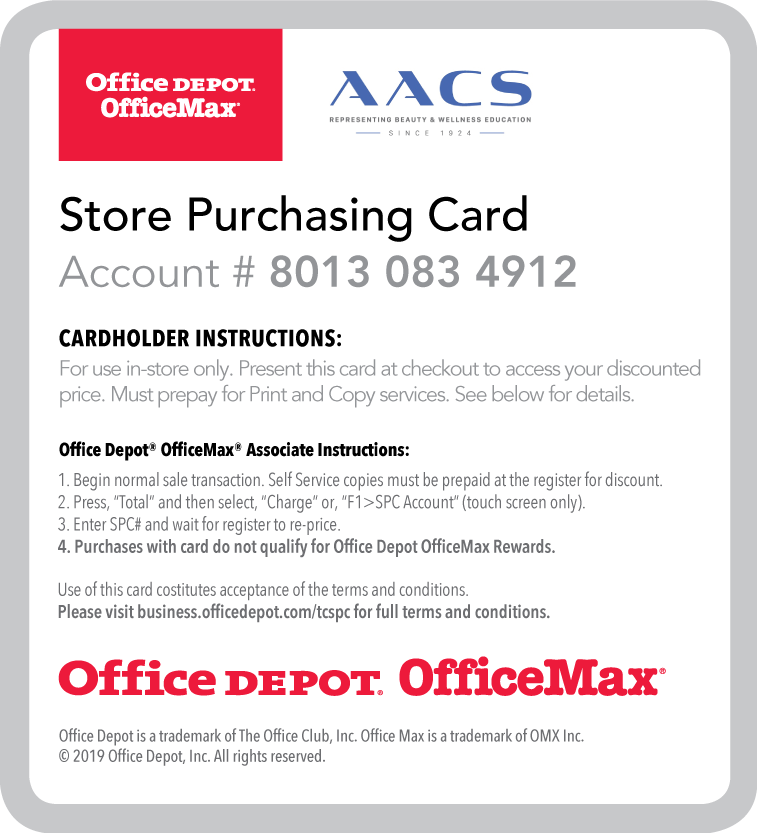 |
||||||
| Archive | Subscribe | Printer Friendly | Send to a Friend | www.beautyschools.org | ||||||
|
What's Hot

Register now for the 2020 AACS Annual Convention & Expo. For the first time, the conference will be 100% virtual. Join us October 27-29, 2020. Register here
Keith Cameron is a former Marine and found American Institute of Beauty, Inc. in St. Petersburg, FL. He wants Congressman Charlie Crist, Senator Rick Scott, Marco Rubio to know that something was missing in his life and he doesn’t know what he would have done without AIB. He knows first-hand the quality of education being offered. We thank Keith for his service to our country and now, our industry. Encourage your students to record a short 30–60 second video that explains what their education means to them. Learn more about the #DontCutUsOut campaign here.

Reopening Guide States are adjusting their phased openings based on new information daily. Stay updated with AACS’ Reopening Guide to help your schools and organization proceed with protocols to ensure the safety and health of your staff, instructors, students, and community. In addition to resources, it also includes a state-by-state list of reopening policies. Click on this link to find out more. Coronavirus Resource Center AACS is here for you with a comprehensive coronavirus resource page that will be updated as new information comes in. Click here for updates from the Centers for Disease Control, World Health Organization, Small Business Administration, U.S. Department of Education, accreditors, distance learning educators and more.
Member Benefits
As a member benefit of The American Association of Cosmetology Schools (AACS) you are eligible to receive our exclusive discounts at Office Depot® and OfficeMax® in-store and on-line.
Access your Store Purchasing Card (SPC) and show the card to the cashier in-store at checkout and see your savings! You can access the card in several ways: 2. Text AACSSPC to 833-602-8404 or, 3. Visit this link
September 23, 2020 Recordings of webinars to help you operate your school in light of the pandemic and changing regulations are available to members only.
If you would like the recording, email info@beautyschools.org. More will be available soon. Monitor your inbox for the latest information. Additional FAQs are available regarding:
GRC News
Federal Updates The Republican and Democratic national conventions concluded last month with President Donald Trump and Vice President Mike Pence and former Vice President Joe Biden and Senator Kamala Harris (D-CA) accepting the nominations of their parties. At each convention, delegates also adopted their respective party platforms, which outline policies on key issues, including higher education. Although party platforms are mostly symbolic gestures, they provide a look at potential priorities of the current or next White House occupant. Citing the scaled-back nature of the convention, the Republicans did not adopt a new platform this year. Instead, the party stated it “enthusiastically supports President Trump and continues to reject the political positions of the Obama-Biden Administration…” and will stick with the 2016 platform. The Republican party platform focuses on improving higher education through preserving freedom of speech and reducing college costs by eliminating burdensome regulations and encouraging innovation. The Republican’s higher education priorities include:
The Democratic party platform emphasizes making higher education affordable and accessible while providing borrowers relief from student debt and vowing to “crack down” on predatory for-profit higher education programs. The Democrat’s higher education priorities include:
Election Coverage According to the most recent national polls, President Trump faces an uphill battle to maintain control of the White House with less than 55 days until election day. Former Vice President Biden currently leads President Trump in Real Clear Politics poll averages by a seven-point margin. However, President Trump is expected to pick up momentum from the presidential debates, scheduled to start on September 29, 2020 at Case Western Reserve University in Ohio. In a Suffolk University/USA Today poll conducted August 28-31, 2020, 47 percent of respondents predicted President Trump will win the debates compared to 41 percent who said former Vice President Biden will. The Republican party platform is available here. The Democratic party platform is available here. Congress Congress returns after its August recess with a full agenda between now and the November 3rd election, including additional relief funding due to the coronavirus and fiscal year 2021 appropriations. Democrats and Republicans remain at a stalemate on several issues impacting Americans but agreement is still possible in coming weeks.
Coronavirus Relief Package Stalled According to Johns Hopkins University, coronavirus cases in the U.S. have reached 6.3 million, with more than 189,000 reported deaths. Despite these figures, the U.S. economy added 1.4 million jobs in August and the unemployment rate fell to 8.4%. These factors highlight the countervailing discussion points as to whether another stimulus is required. On May 15, 2020, House Democrats unveiled their starting point for negotiations by passing the Health and Economic Recovery Omnibus Emergency Solutions (HEROES) Act. However, the White House and Senate Republicans quickly dismissed the HEROES Act as a non-starter due to its $3.4 trillion price tag. On July 27, 2020, Senate Republicans introduced the Health, Economic Assistance, Liability Protection and Schools (HEALS) Act. The HEALS Act clocks in at roughly $1.1 trillion. House Democrats have attacked the HEALS Act as insufficient to address the gravity of the health and economic situation. Speaker Nancy Pelosi (D-CA) has indicated that there will not be further discussion on a relief package until Senate Republicans and President Trump agree to at least a $2.2 trillion stimulus package. Senate Republicans have signaled their intent to introduce a “skinny” relief bill in coming days. Dubbed the Delivering Immediate Relief to America’s Families, Schools and Small Business Act, the Republican bill reportedly includes $105 billion in education stabilization funding, with nearly $29 billion directed to public, nonprofit, and proprietary institutions of higher education. Additionally, the bill includes another round of funding for the Paycheck Protection Program for small businesses, liability protections for companies, schools, and health care providers, and billions to the U.S. States Postal Service. Senate and House Democrats have repeatedly rejected a piecemeal approach to coronavirus relief and called the narrowed Republican proposal “completely inadequate.” Since the legislation would need 60 votes to pass in the Senate, it seems unlikely the White House-backed targeted approach will advance but may spur another attempt to reach a compromise stimulus package. Fiscal Year 2021 Appropriations Congress has until September 30, 2020 to pass legislation to keep the Federal government operating on October 1 and thereafter. Although the House passed 10 of the 12 FY 2021 appropriations bills, the Senate has not marked up any of its bills and appears unlikely to do so before the deadline. As a result, Speaker Nancy Pelosi (D-CA) and Treasury Secretary Steven Mnuchin announced an informal agreement to pursue a Continuing Resolution (“CR”) to avoid a government shutdown at the end of September. There is no indication for how long the stopgap funding would extend government funding past September 30; however, a mid-December deadline is a common practice during an election year.
U.S. Department of Education New Distance Education and Innovation Rule Released On September 2, 2020, the Department of Education released its official final rule on distance education and innovation. The rule makes several significant changes to the regulations affecting programs under title IV of the Higher Education Act of 1965, as amended. The rule creates greater certainty for implementing innovative programs that comply with Department requirements and maintain protections for students and taxpayers. Changes made to the regulations emphasize flexibility, workforce development, and innovative educational approaches. Additionally, elimination of certain regulations reinforces the Department’s preference toward enforcement of a limited number of important and straightforward safeguards rather than maintaining numerous low-risk restrictions that could deny benefits to students and employers. Major changes in the final rule include:
The regulations are effective July 1, 2021, but institutions may voluntarily implement any or all provisions on or after September 2, 2020. A copy of the final rule is available here.
Implementation of President Trump’s Memorandum on Student Loan Relief On August 21, 2020, Education Secretary Betsy DeVos issued an announcement directing the Office of Federal Student Aid to extend student loan relief to borrowers pursuant to President Trump’s Presidential Memorandum signed on August 8, 2020. This relief provides that all borrowers with federally held student loans will have their payments automatically suspended until December 31, 2020 without penalty. The interest rate on all federally held student loans will also be set to 0% through the end of the calendar year. Borrowers who wish to continue making student loan payments are allowed if they choose. Additionally, the Department will continue the suspension of involuntary debt collection for borrowers in default on federally held loans until December 31, 2020. The time during the presidential memorandum’s relief period will also count toward the requisite monthly payments for borrowers in the Public Service Loan Forgiveness Program and as payments required to receive forgiveness under an income-drive repayment plan. A copy of the presidential memorandum is available here. A copy of Secretary DeVos’s press release is available here.
CARES Act Funds- Application Period Re-Opened On September 4, 2020, the Department of Education published a Federal Register notice announcing the reopening of the application period for institutions of higher education to apply for funds under the CARES Act’s Higher Education Emergency Relief Fund. The notice reopens the period for transmittal of all applications until September 30, 2020 and includes:
The notice is available here.
Proposed Information Collection Request for CARES Act Funds On July 29, 2020, the Department of Education published a Federal Register notice regarding a new information collection request on the CARES Act’s Higher Education Emergency Relief Fund (HEERF). The information collection creates a new reporting obligation for higher education institutions that received HEERF funds. According to the Department, the new information collection is necessary for institutions to comply with the CARES Act as well as the Recipient’s Funding Certification and Agreements. Information collected through the new information collection will be reviewed by Department employees to ensure that both the student and institutional portions of the HERRF funds are used in accordance with the CARES Act. Additionally, the data collected will inform Department monitoring and oversight of institutions and be shared publicly for transparency purposes. The Department proposes institutions report several data elements through a Department-provided web portal:
The Department’s notice provides institutions and interested parties an opportunity to review and comment on the proposed process and data collection form, including the data elements that institutions will be required to report. Comments on the information collection request are due on or before September 28, 2020. The notice is available here.
Update to Public Posting Requirement for Higher Education Emergency Relief Fund Grantees On August 31, 2020, the Department of Education published a Federal Register notice revising its May 6, 2020 Electronic Announcement (EA) that describes the public reporting obligations for institutions that received the student aid portion under section 18004(a)(1) of the CARES Act’s Higher Education Emergency Relief Fund. The notice maintains the same seven reporting elements required in the EA, but clarifies item four: the estimated total number of students at the institution eligible to participate in programs under section 484 in title IV of the Higher Education Act of 1965, as amended. A new footnote explains that for the purposes of item four, institutions may determine the number of eligible students based on the number of students for whom the institution has received an Institutional Student Information Record (ISIR) plus the number of students who completed an alternative application form developed by the institution for this purpose. The institution may then apply this number to its own methodological framework for disbursal of funds to produce a final total of eligible students at the institution. The notice also decreases the reporting frequency after the initial 30-day period from every 45 days to quarterly. Effect immediately, fund reports must be updated and posted to the institution’s publicly available website no later than 10 days after the end of each calendar quarter (i.e., September 30, December 31, March 31, and June 30). The notice is available here.
Federal Court Strikes Down Higher Education Emergency Relief Fund Eligibility Criteria On September 3, 2020, U.S. District Court Judge Leo T. Sorokin, an Obama appointee, ruled against the Department of Education’s eligibility criteria that limits CARES Act funds from the Higher Education Emergency Relief Fund only to students who qualify for Title IV assistance under the Higher Education Act of 1965, as amended. The ruling applies a statewide injunction enjoining Education Secretary Betsy DeVos from enforcing her interim final rule published in the Federal Register on June 17, 2020 as to any institution of higher education in Massachusetts and to any student attending school in the state. Judge Sorokin’s ruling is the latest federal judge to find the Department’s title IV eligibility restrictions unlawful. Federal judges in California and Washington State issued similar injunctions against the Department earlier this summer. The ruling is available here. The Department’s litigation updates are available here.
On August 21, 2020, the Department of Education published an Electronic Announcement (EA) extending the deadline for flexibilities related to the COVID-19 emergency through the end of the payment period that includes December 31, 2020 or the end of the payment period that includes the end date for the Federally-declared emergency related to COVID-19, whichever occurs later. These flexibilities were initially published in a series of EAs on March 5, April 3, May 15, July 9, and July 10, 2020. However, the general extension in the August 21 EA does not apply to select flexibilities, including campus-based matching requirements, leave of absence, return of title IV funds, use of distance education by foreign institutions, academic calendars, and reporting and audit requirements. The announcement is available here.
Notice of the Rescission of Outdated Guidance Documents On August 31, 2020, the Department of Education published a Federal Register notice announcing the rescission of select guidance documents because they are outdated. This action stems from President Trump’s Executive Order titled “Promoting the Rule of Law Through Improved Agency Guidance Documents.” The executive order required the Department to ‘‘review its guidance documents and, consistent with applicable law, rescind those guidance documents that it determines should no longer be in effect.” The notice notifies the public, including the Department’s stakeholders, of the guidance documents the Department rescinds as outdated (e.g., superseded by subsequent statutory amendments or enactments), in accordance with the executive order. The guidance documents identified as being rescinded in the notice do not include any guidance documents the Department has, is considering, or is planning to rescind through exercising the Department’s policy-making discretion (i.e., rescissions based on a change in Department policy or statutory interpretation). The notice is available here. The executive order is available here.
Constitution Day and Citizenship Day Educational Program September 17 is Constitution Day and Citizenship Day, which commemorates the September 17, 1787 signing of the U.S. Constitution. In recognition, Congress mandates that every educational institution receiving federal funding hold an educational program about this seminal document on September 17 each year. This provision applies to all educational institutions receiving funds from any Federal agency, including institutions of higher education. Congress nor the Department has waived this year’s requirement despite the ongoing national emergency; therefore, institutions remain obligated to hold an educational program pertaining to the U.S. Constitution on September 17, 2020. Constitution Day resources are available here.
FY 2017 Student Loan Cohort Default Rates Expected Late September The Education Department is expected to release the FY 2017 national federal student loan cohort default rate later this month. For the last three years, rates were released on September 25 (FY 2016), September 26 (FY 2015), and September 27 (FY 2014). An institution’s official cohort default rate will be sent via the Student Aid Internet Gateway (SAIG) mailbox. A key accountability metric, schools with high default rates that are 30 percent or greater for three consecutive years or more than 40 percent for the latest year may lose eligibility in or ability to expand their federal student aid programs. Default management resources are available here.
|
||||||









